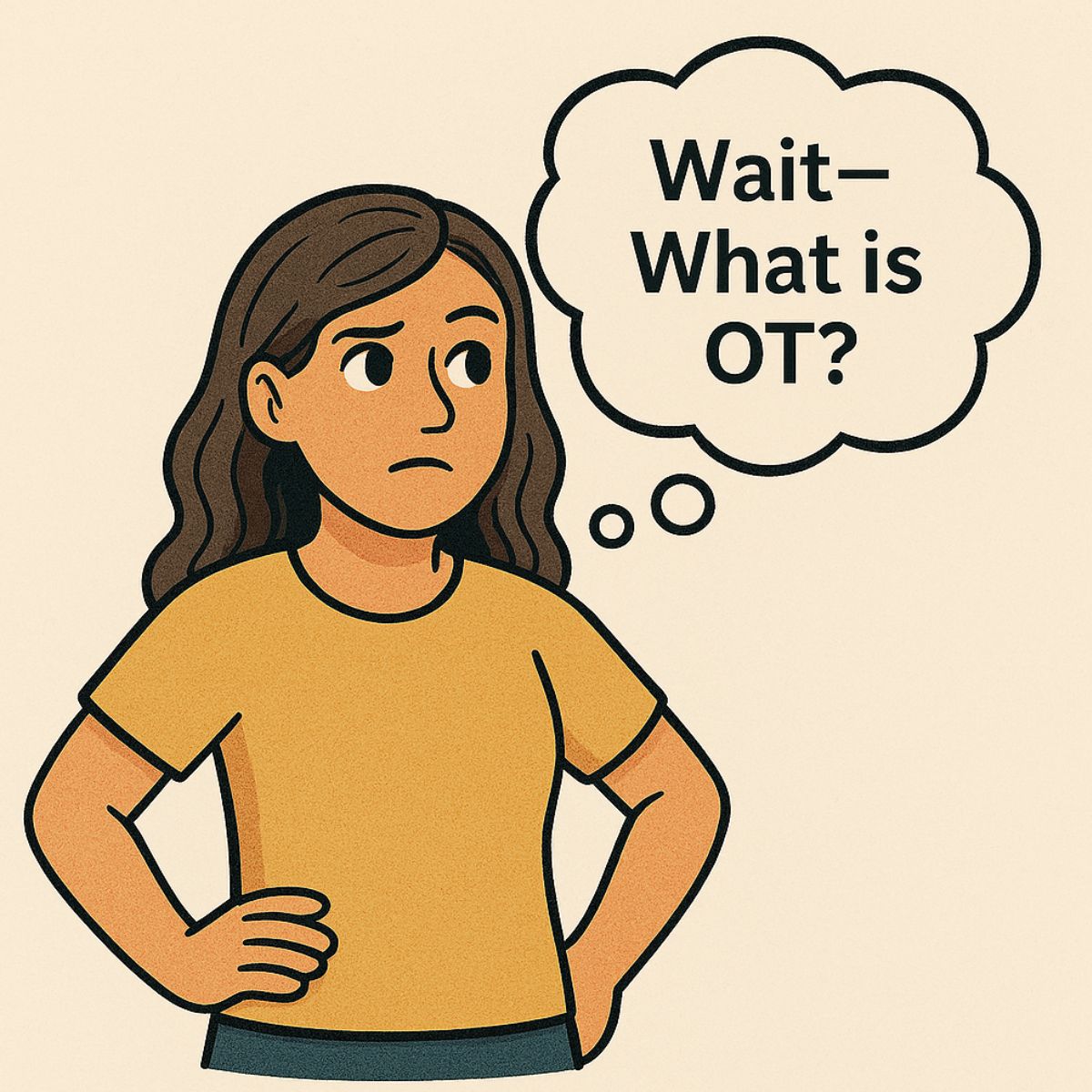7-minute read
Heads up! This post may include affiliate links, which means I might earn a small commission (at no extra cost to you) if you decide to make a purchase. I only share things I truly find helpful—thanks for supporting the blog!
Introduction: More Than Just “Fine Motor Skills”
Ever wonder why occupational therapy (OT) always flies under the radar compared to physical therapy or speech therapy? While everyone seems to know what a PT or SLP does, occupational therapists are still explaining that no, they don’t just help people “get jobs.” The truth? Occupational therapy plays a crucial, often life-changing role in helping people of all ages regain independence, improve their quality of life, and thrive in their daily routines—physically, mentally, and emotionally. Yet despite its impact, OT doesn’t always get the recognition it deserves.
Let’s change that.

What Is Occupational Therapy, Really?
At its core, occupational therapy is all about helping people participate in the activities—or occupations—they need or want to do every day. That includes everything from brushing teeth to going to school or work, managing medications, and even engaging in leisure hobbies.
Occupational therapists (OTs) assess individual needs and design intervention plans tailored to support independence and functional participation. Whether it’s helping a child with autism build sensory tolerance or guiding a stroke survivor in relearning daily tasks, OTs bring science, compassion, and creativity to every session.
🔗 Learn more from the AOTA: What is Occupational Therapy?

What Do Occupational Therapists Actually Do?
Depending on the setting, occupational therapists wear many hats:
- In pediatrics, they work with children on fine motor skills, sensory regulation, and adaptive play.
- In hospitals, they support patients recovering from surgeries, injuries, or medical conditions to regain function.
- In rehabilitation centers, OTs are a key part of interdisciplinary teams helping patients return to independence after events like strokes or traumatic brain injuries.
- In mental health settings, OTs use therapeutic activities to promote coping strategies, social engagement, and self-care routines.
Their role may include:
- Environmental modifications
- Adaptive equipment training
- Cognitive therapy
- Sensory integration
- Task analysis and skill-building

Don’t Forget OTAs: The Unsung Heroes
What is an occupational therapy assistant? These licensed professionals work directly under OTs to implement treatment plans, often developing strong, day-to-day relationships with clients. OTAs are vital to the therapy process and are trained in intervention techniques, documentation, and therapeutic use of activities.
💡 Bonus: The OTA career path is a fantastic option for those looking to enter healthcare with a more flexible timeline and educational cost than a master’s program.

Specialized Areas: From Autism to Hand Therapy
One of the most versatile things about OT is its scope.
- Occupational therapy for autism often focuses on sensory processing, emotional regulation, communication, and daily routines.
- Hand therapists (OTs with advanced training) specialize in post-surgical rehabilitation and orthopedic recovery.
- Geriatric OTs help aging adults maintain independence and prevent falls.
- School-based therapists support students with IEPs to thrive academically and socially.
OTs are not just generalists—they are problem-solvers with clinical reasoning and a human-centered approach.
Occupational Therapist Job Description & Career Outlook
An occupational therapist’s job description includes:
- Evaluating clients’ needs
- Designing and updating treatment plans
- Coordinating care with healthcare teams
- Documenting progress
- Educating caregivers or families
So… is occupational therapy a good career? Absolutely.
- Job Outlook: The U.S. Bureau of Labor Statistics predicts a steady job growth rate of 12% for OTs from 2022 to 2032.
- Flexibility: OTs work in hospitals, schools, home health, early intervention, and even telehealth.
- Salaries: Median pay for OTs in the U.S. hovers around $93,000/year (2023 data), and OTAs average $64,000/year.
Why Isn’t OT Better Known?
A few reasons:
- Confusion around the term “occupational”
- Lower visibility in media and pop culture
- Lack of awareness in school guidance counseling and general healthcare marketing
But the tide is turning. OTs are advocating harder than ever. Social media, blogs, and grassroots awareness campaigns are helping push OT into the spotlight.
The Future of OT: Innovation and Advocacy
Occupational therapy continues to expand into:
- Telehealth and digital health tools
- Community health and wellness
- Global health initiatives
- Advanced certifications and research
We’re seeing more OT entrepreneurs, private practices, and product creators than ever before.
As the world learns more about holistic health, function, and mental well-being—OT is ready to lead.

📘 Celebrate OT Month with a New Release!
April is Occupational Therapy Month—what better time to launch our OT Pocket Guide? This compact, quick-reference book is perfect for therapists, students, and caregivers looking to save time and stay sharp.
…

Conclusion: OT Deserves the Spotlight
Occupational therapy is often the quiet force behind major life transformations—yet it remains overlooked. Now’s the time to amplify its voice.
Whether you’re a student, a caregiver, or simply curious about rehab professions, consider taking a deeper look into OT. You might just discover the most rewarding path you never knew existed.
✅ Download Your Free OT, PT, and ST Quick Reference Sheets
Get free 1-page therapy reference sheets designed for rehab professionals or curious learners. Each sheet breaks down common interventions, settings, and tools of the trade.
Subscribe and Download our free Rehab Therapy Quick Reference Sheets
Be sure to subscribe to our newsletter and keep an eye out for our OT Pocket Guide (April), ST Pocket Guide (May), and PT Pocket Guide (October)—each packed with clinical tools, checklists, and intervention-based tips for everyday use.

Leave a Reply